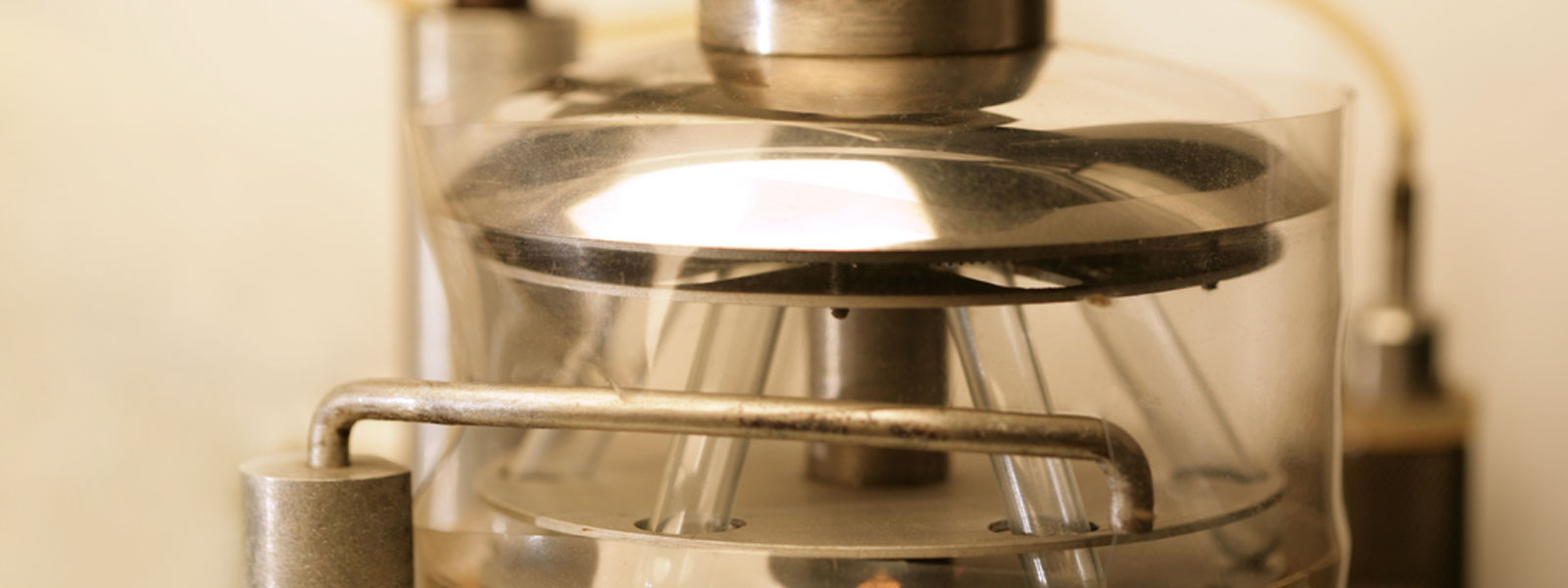The C-7M Coombs centrifuge
Automating antibody detection
Technical file
Type of innovation: Device
Scope: Clinical Analysis
Innovation leader: Grifols i Lucas, Víctor
Year: 1966
Period: 1909-1971
Geographical scope: International
Economic impact: Medium
Level of innovation: Disruptive
Patent: Yes
Interdisciplinary connections: -
At Gri-Cel, a Grifols company, Víctor Grifols began to manufacture increasingly complex devices to solve the different needs that were arising in laboratories.
On one of his trips to the United States he told Dr. Guillermo Anido, who worked at a partner company at the time, Dade Reagents, that there was a need to create a centrifuge that would automate the Coombs test, a blood test to detect the presence of antibodies in the serum of the recipient.
Detecting dangerous antibodies
This important blood test detects the presence of antibodies in the recipient's serum that react with the donor's red blood cells, making the blood transfusion risky. The idea excited Anido, who joked about giving Víctor Grifols and his wife a trip to the United States if he could make such a device work.
Víctor took up the challenge immediately. He designed a prototype that allowed sample tubes to be placed at an angle to the axis of the motor. Once the samples had been centrifuged, they were placed vertically so that the liquid could drain. In this way, any sediments could accumulate in the bottom of the test tubes.
“The Coombs centrifuge, designed by Victor Grifols, was built, patented and marketed by Dade Reagents as the Centrifuge C-7M, and was a global success for many years.”
A big success worldwide
The Coombs centrifuge, designed by Víctor Grifols, was built, patented and marketed by Dade Reagents as the Centrifuge C-7M, and was a global success for many years. In the United States many units were sold because it greatly facilitated the analytical work of any medical laboratory.

Bibliography
Foreign Service of the United States of America. (1966). Certificate of acknowledgement of execution of an instrument. Washington: United States of America.
Gri-Cel, S.A. (1968). Aparatos científicos para control y análisis. [Sales brochure]. Barcelona: Gri-Cel, S.A. y Grupo American Hospital Supply Corporation.
Alexander, J.W., & Good, R.A. (1984). Principios de inmunología clínica. Barcelona: Editorial Reverté.
Almaguer-Gaona, C. (2005). Pruebas de compatibilidad previas a la transfusión y la prueba de la antiglobulina humana o de Coombs. En: J.C. Jaime-Pérez & D. Gómez-Almaguer (Eds.), Hematología. La sangre y sus enfermedades (pp. 205-210). México: McGraw Hill Education.
Grifols-Lucas, V. (2009). Amb un suro i un cordill. Vivències d'un empresari de postguerra. Barcelona: Grupo Grifols, S.A.
Grifols, S.A. (2011). ¿Y si lo hacemos así? Patentes de Víctor Grífols i Lucas. Barcelona: Grifols, S.A.
Chernecky, C.C., & Berger, B.J. (2013). Coombs' test, direct (direct antiglobulin test) – serum. En: C.C. Chernecky & B.J. Berger (Eds.), Laboratory Tests and Diagnostic Procedures (pp. 380-381). Philadelphia: Elsevier.
Chernecky, C.C., & Berger, B.J. (2013). Coombs' test, indirect (indirect antiglobulin test) – serum. En: C.C. Chernecky & B.J. Berger (Eds.), Laboratory Tests and Diagnostic Procedures (pp. 382). Philadelphia: Elsevier.
Avellà, R., & Miquel, B. (Eds.). (2015). Cuando un sueño se cumple. Crónica ilustrada de 75 años de Grifols. Barcelona: Grupo Grifols, S.A.
Related innovations
DEVICE
Microcentrifuge